Author: Marshall Schott
The 6 gallon/22.7 liter plastic bucket is likely the most common fermentation vessel used by homebrewers, especially those new to the hobby since one is usually included in starter kits. On the plus side, they’re cheap, light, and the wide opening makes them relatively easy to clean. However, they’re also easy to scratch and their thinness makes them more permeable to oxygen. One alternative is Speidel’s line of plastic fermentation tanks, which rely on the same HDPE to create a thicker and thus less oxygen permeable vessel that also has a valve on the bottom for easier racking. I received a 60 liter/15.9 gallon Speidel tank as a gift a few years ago and while there was a lot about it I liked, I realized rather quickly that I’m not yolked enough to lift the full vessel in and out of my chest freezer chamber, so I got rid of it.
For the last year, I’ve been fermenting beers almost exclusively in Ss Brewtech Brew Buckets, which offer features similar to the Speidel but in stainless steel, a brewing industry standard due to its durability and oxygen impermeability. When recently asked for my opinions between the two, I realized I couldn’t provide a solid response since given my limited experience with the Speidel, so I bought one, only this time it was the 30 liter/7.9 gallon version.
With so many prior xBmts suggesting fermentation vessel has a qualitative impact on beer, I was excited to pit the plastic Speidel tank against various other fermentors and kicked things off by comparing it to my go-to stainless Brew Bucket.
| PURPOSE |
To evaluate the differences between beers produced using the same process where one was fermented in a stainless steel vessel and the other in a HDPE plastic vessel.
| METHODS |
A standard, relatively simple Pale Ale seemed like it’d allow for any differences caused by the variable to stand out, so that’s what I brewed for this xBmt.
Panhandle
Recipe Details
| Batch Size | Boil Time | IBU | SRM | Est. OG | Est. FG | ABV |
|---|---|---|---|---|---|---|
| 5.5 gal | 60 min | 37.1 IBUs | 3.7 SRM | 1.054 | 1.014 | 5.3 % |
| Actuals | 1.054 | 1.012 | 5.5 % | |||
Fermentables
| Name | Amount | % |
|---|---|---|
| Pilsner (Weyermann) | 8.5 lbs | 75.56 |
| Vienna Malt (Weyermann) | 2.75 lbs | 24.44 |
Hops
| Name | Amount | Time | Use | Form | Alpha % |
|---|---|---|---|---|---|
| Amarillo | 15 g | 60 min | First Wort | Pellet | 7.9 |
| Amarillo | 30 g | 20 min | Boil | Pellet | 7.9 |
| Amarillo | 60 g | 2 min | Boil | Pellet | 7.9 |
| Amarillo | 120 g | 3 days | Dry Hop | Pellet | 7.9 |
Yeast
| Name | Lab | Attenuation | Temperature |
|---|---|---|---|
| Deiter (G03) | Imperial | 75% | 60°F - 69°F |
Notes
| Water Profile: Yellow Bitter in Bru’n Water Spreadsheet |
Download
| Download this recipe's BeerXML file |
I made a starter of Imperial Organic G03 Dieter yeast, a clean fermenting Kölsch strain, 2 days ahead of time.
The evening prior to brewing, I collected the full volume of filtered water and adjusted it to my desire profile.
I then weighed out and milled the grains.
My heat stick began heating the liquor a couple hours before I woke up, which meant it was nearly at strike temperature when I started brewing.

Using the no sparge method, I added the milled grains to the full volume of water.

After a couple minutes of stirring, I checked to make sure I’d hit my target mash temperature.
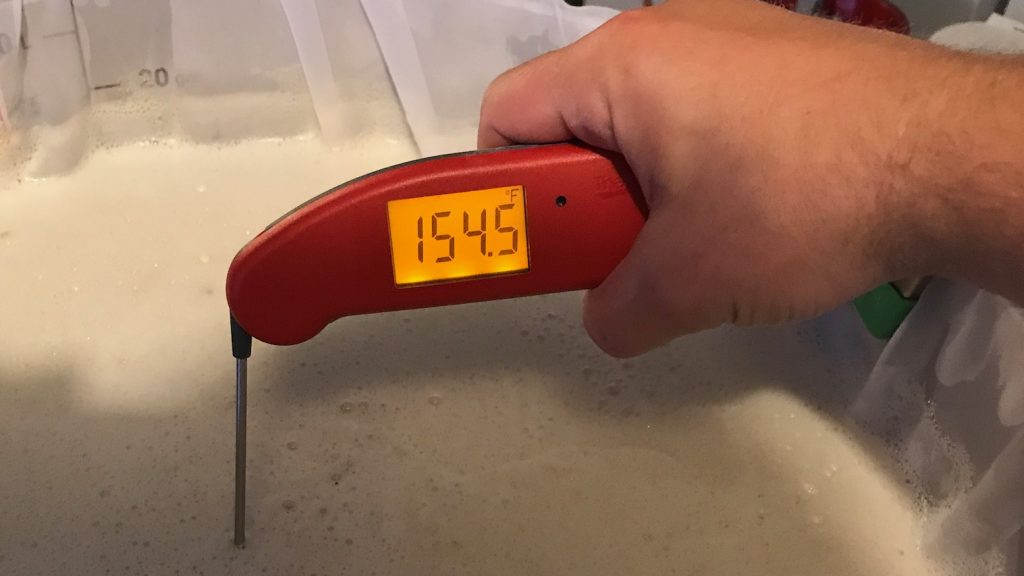
A pH reading 15 minutes into the mash showed it was right on target.
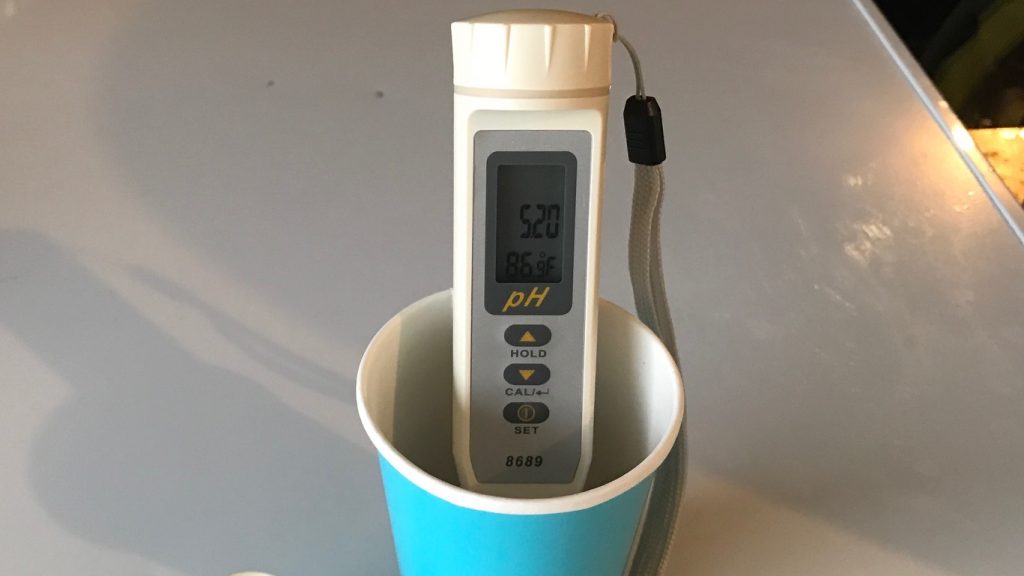
Once the 1 hour mash was complete, I began collecting the sweet wort.

The wort was transferred to my kettle and boiled for 60 minutes with hops added per the recipe.
At the end of the 60 minute boil, I quickly chilled the wort to a tad warmer than my groundwater temperature.

A refractometer measurement showed I’d hit my target OG.
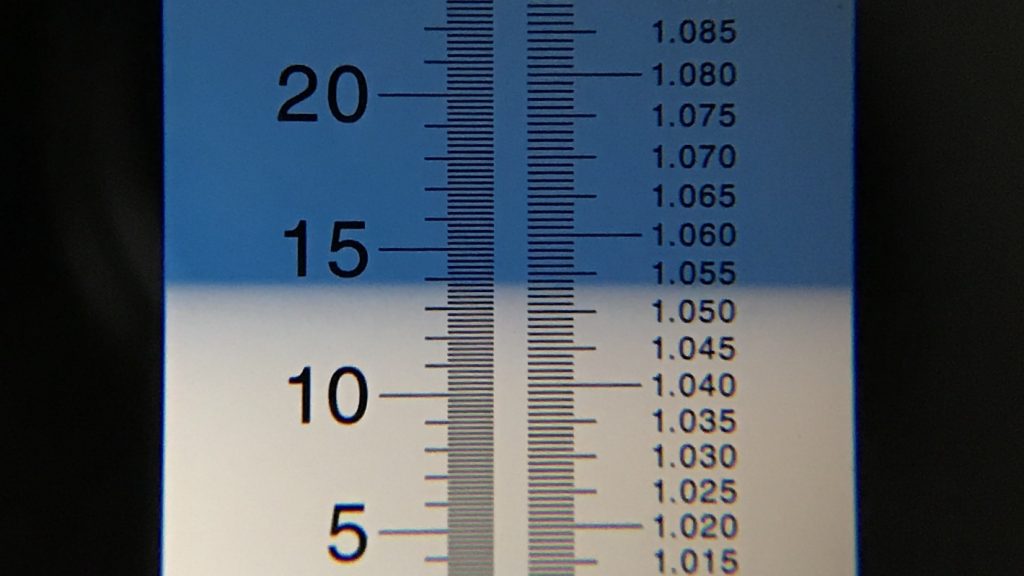
I proceeded split the wort evenly between a stainless Ss Brew Bucket and a plastic Speidel fermentation tank, racking 5.5 gallons/21 liters of chilled wort to each.

The filled fermentors were placed next to each other in a chamber controlled to my desired fermentation temperature.
It took 4 hours for both worts to stabilize at my desired fermentation temperature of 65°F/18°C, at which point I split the yeast evenly between the batches. I noticed airlock activity from both just a few hours later and fermentation progressed similarly in each. With signs of activity dwindling 4 days later, I raised the temperature to 72˚F/23˚C to encourage complete attenuation. After another 3 days, I took a hydrometer measurements showing FG had been reached.
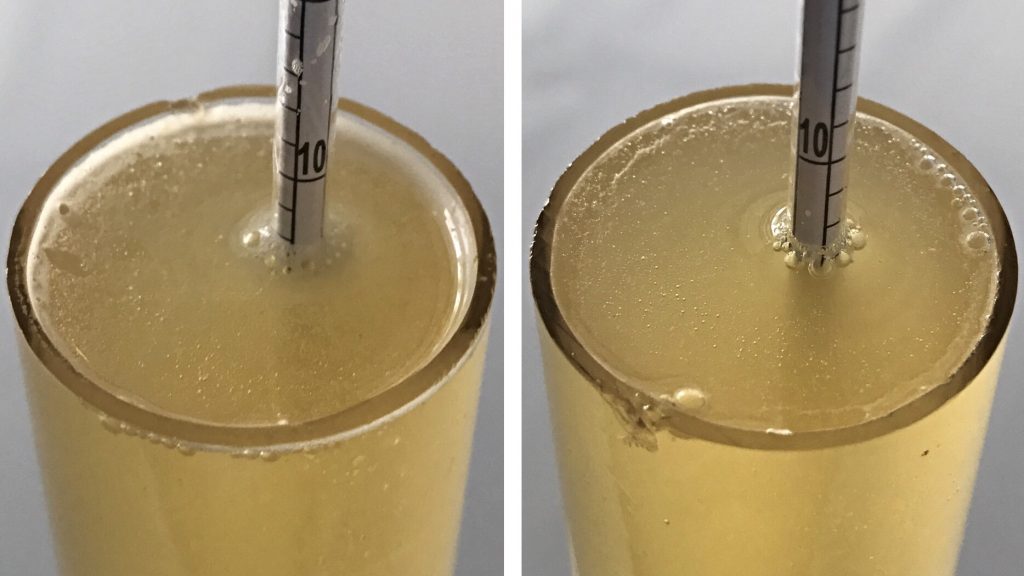
I dry hopped both beers then let them sit for 3 more days before I proceeding with cold crashing, fining with gelatin, and kegging.
The filled kegs were placed in my cold keezer where they were burst carbonated for 15 hours before I reduced the gas to serving pressure and allowed them to condition for another few days before collecting data.
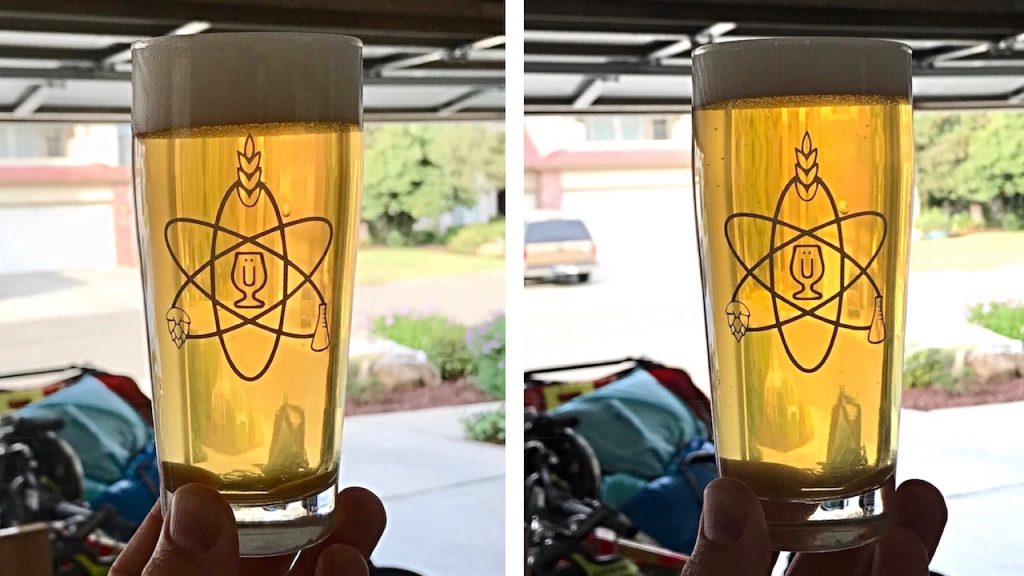
| RESULTS |
A total of 20 people of varying levels of experience participated in this xBmt. Each participant was served 1 sample of the beer fermented in the stainless steel vessel and 2 samples of the beer fermented in the HDPE vessel then asked to identify the sample that was unique. Given the sample size, 11 tasters (p<0.05) would have had to select the unique sample to reach statistical significance, though only 6 (p=0.70) made the correct selection, suggesting participants were unable to reliably distinguish a Pale Ale fermented in a Ss Brewtech Brew Bucket from the same beer fermented in a plastic Speidel vessel.
My Impressions: To my palate, there was nothing noticeably dissimilar about these beers, they smelled and tasted exactly the same, which is evident in my triangle test performance– I was right in only 2 out of 7 attempts. I really enjoyed the beers, which I perceived as having balanced floral and citrus with a little spice in the background, nothing complicated, just a straight forward easy-drinking Pale Ale. Contributor Ray Found happened to be in town while this beer was on tap and he couldn’t identify the unique sample either, stating, “those beers are exactly the same.”
| DISCUSSION |
Had this been our first fermentation vessel xBmt, the results showing tasters weren’t able to reliably distinguish a Pale Ale fermented in stainless steel from one fermented in HDPE wouldn’t have surprised me a bit, as I never thought fermentation vessel would have an impact on beer quality. However, with 3 out of 4 previous xBmts on this variable returning significant results, I almost expected to see the same here.
Considering these findings in light of previous xBmt results does little to provide a clear explanation of what it is about different vessels that causes a difference. While I still think oxygen ingress may generally play a bigger role than the actual material the vessel is made of, it also seems entirely plausible that a well used plastic vessel might leech certain characteristics from prior batches into new beers. Indeed, the plastic bucket used in the first fermentation vessel xBmt had been used to ferment 30 or more beers and, despite my best cleaning efforts, maintained a very slight discoloration– nothing drastic, just not as stark white as a brand new bucket. A comparison of identical HDPE vessels where one is new and the other has been used many times would help determine if this is a factor.
As far as my experience with either fermentation vessel goes, I like that both share the convenience of a valve for siphon-free transfers and a wide opening for easy cleaning. That said, the Speidel tank is made of plastic that can be scratched and harbor bacteria, ultimately requiring replacement, whereas stainless steel is much more durable. The Speidel tank also has more volume, 7.9 gallons/30 liters to the Brew Bucket’s 7 gallons/26.5 liters, which is great for high kräusen fermentations but may increase the risk of oxygen exposure, particularly for beers left in primary for extended periods of time. Finally, while the large opening on the Speidel tank is convenient for cleaning, I found it was just small enough that I’d bump my hand on the edge when taking hydrometer samples, which I could see causing me to drop the turkey baster into the beer. For these reasons, my preference is for the Ss Brewtech Brew Bucket, though I absolutely plan to continue using my Speidel and think it is a fantastic option for homebrewers!
If you have thoughts about this xBmt, please feel free to share in the comments section below!
Support Brülosophy In Style!
All designs are available in various colors and sizes on Amazon!
Follow Brülosophy on:
FACEBOOK | TWITTER | INSTAGRAM
If you enjoy this stuff and feel compelled to support Brulosophy.com, please check out the Support Us page for details on how you can very easily do so. Thanks!



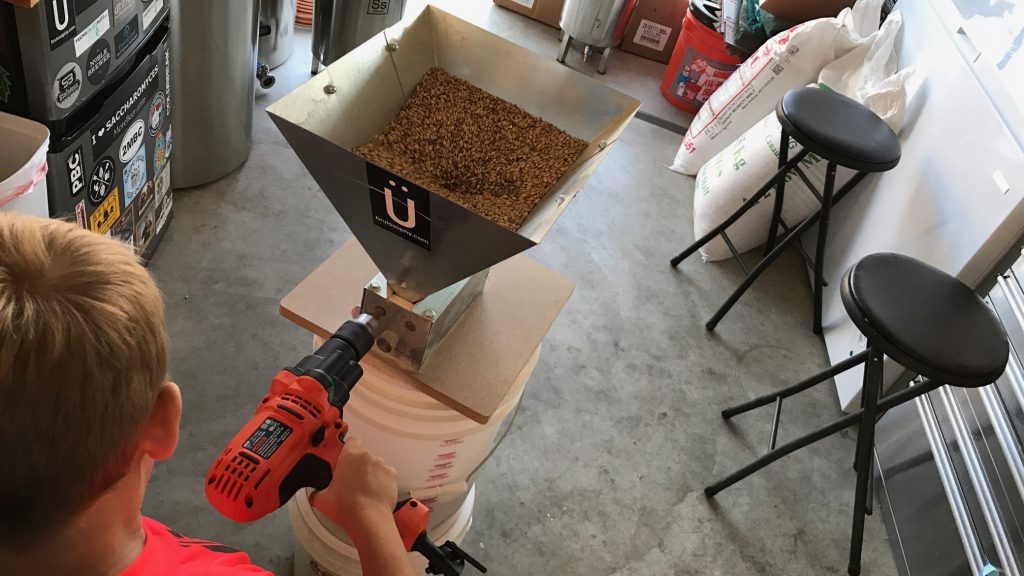

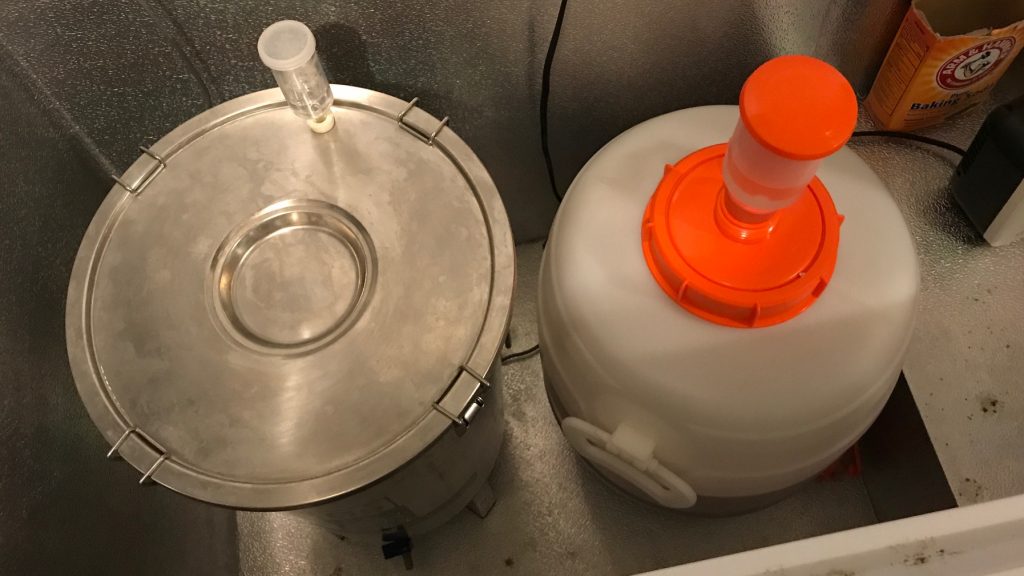











24 thoughts on “exBEERiment | Fermentation Vessel: Stainless Ss Brew Bucket vs. Plastic Speidel Tank In An American Pale Ale”
Interesting Exbeeriment – I’ve been using the Speidel fermenters for just over a year and like them, but they could be better.
I almost ordered SS BrewBuckets a couple of months ago but went a different route and fitted the rotatable racking pipe and tap, from a BrewBucket, to the Speidel. Also fitted a thermowell to it. Not much additional cost but the rotatable racking pipe has been brilliant at bottling.
Why would you use a turkey baster when you have a spigot ready to use?
The valve is very close to the ground, I can’t fill a glass and using tubing is messy.
Another great xbmt. Quick and Dumb question though: why do you have to use a turkey baster when you can pull a sample out of the bottom tão?
It’s easier than lifting it out of the chest freezer to use the spout
correction: bottom tap?
The valve is very close to the ground, I can’t fill a glass and using tubing is messy.
I told you it was a dumb question LOL. I use a regular refrigerator for fementation, so I don´t have this kind of problem, that´s why I asked. Thx
I’d just be guessing but it looks like the valve on the SPEIDEL is pretty low to the ground so without lifting the fermentor from the chest freezer (which would stir up all the trub) it’s probably not possible to pull the sample from the valve.
Not surprised by the results for a relatively quick turnaround beer. I’d be curious what the outcome would be on a “big beer” or a sour that would typically age for an extended period of time. The latter style would theoretically show more range as any oxygen ingress would be exacerbated
I agree with Jay, the bigger question is how would these beers age. The main downside to the Speidel fermenter is possible oxygen Ingress which wouldn’t be evident right away I wouldn’t think.
O2 shouldn’t be much of an issue with either fermenter in your situation.
Fermenting in a chest freezer limts the amount of oxygen that surrounds your fermenters since your wort expels CO2 that settles to the bottom of the chest and forces the O2 out.
What is the price difference between these two?
Speidel is $60, Ss Brew Bucket is $200.
Looks like Anvil is coming out with its own brew bucket at $129 for the 7 gallon version. Should be doing in November.
Solid evaluation. I’d recommend taking sample cultures of each, especially monitor the plastic fermenter. I’ve heard accounts of increasing contamination in the plastic that would deter me. Also would be interested in the longterm stability comparison of these beers.
Great comparo thanks. I’ve had a speidel purchase in the back of my mind for a while (the bigger one), but I’m glad you brought up the all important “yolked” factor. Solo brew days are a pain in the ass if you’re worried you might dump the proceeds of all your work trying to get it in the fermenter.
Unrelated question: Maybe I missed it, but I’ve noticed a ton of Imperial yeasts in your recent exbeeriments. Is there a forthcoming article/exbeeriment about their yeasts?
Norcal brewing solutions make some awesome add ons for Speidel if you’re not a fan of their standard spigot and airlock configuration
Wondering if you borrowed someone’s plastic fermenter that’s been in use for a few years if this simple clean beer would still have this result.
I have been using Speidel’s for a few years now. I made wine for the first time last year and used a 20L (5.3 gal) to age a red for 5 months. This vessel was perfectly clean after I drained and washed is with PBW. I then put hard cider in it which sat for 3 months clearing. I taste no wine like flavors in the finished cider. I do have two 60L (25.9 gal) Speidel’s that I use for hard cider. I would agree they are heavy beasts when full! I have moved completely away from glass carboys. I have 2 60L, 3 30L, and 3 20L Speidel fermenters. So far I am happy with these fermenters. I think they do a fantastic job! I do plan on upgrading and having a friend weld stainless nipples to stainless fender washers so that I can replace the plastic spigots with stainless tri-clover valves in the future.
Another great exbeeriment. Question on your cold crash and finning. Did you do that in the fermenters or in the kegs? If in the fermenters, did you have any problems transferring with the valves so close to the bottom?
Primary. Never had an issue.
Hey Marshall, have you ever done an exbeeriment involving the “agitation” of fermenter trub?
I ferment in a bucket or carboy in my basement about 62 to 64*, transfer to a keg, gelatinize, and crash in the upstairs beer fridge. The only batch that I have dumped so far involved me taking the carboy up to the beer fridge to cold crash. I think the shaking of it in its trip completely ruined it. Lots of bitter notes and it never really cleared. Gross stuff.
I can’t imagine that was the problem, but I’m at a loss to what killed that beer.
Hi, great article, as usual. To me, it would be interesting to make trials with long secondary fermentation (ie months) like we do in Belgium for some beers. I would anticipate oxidation with plastic fermentor (they are permeable to O2 while stainless steel fermentor are not). I noticed that…
Cheers,
Valéry
You should test a well aged plastic vessel vs a well aged stainless vessel.